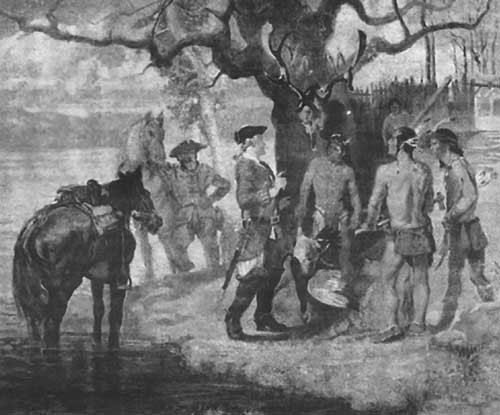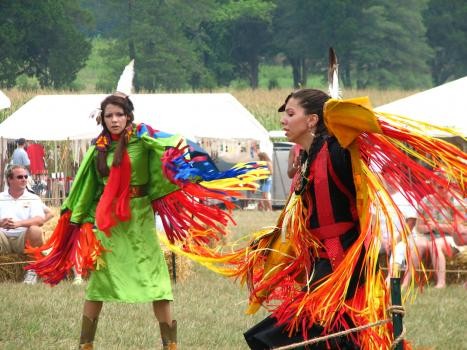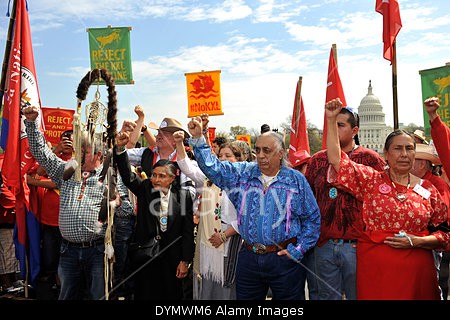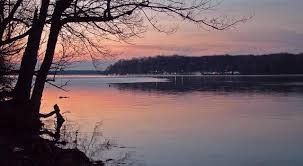Piscataway Park and Native American History in Washington DC
Introduction
Text-to-speech Audio
Images
European explorers meet the Piscataway in the late seventeenth century

Present-day Piscataway in Southern Maryland

Present-day Piscataway peoples protest the building of the Keystone Pipeline on April 22, 2014

Piscataway Park

Backstory and Context
Text-to-speech Audio
Europeans began to explore the area during the early seventeenth century. This included the expeditions of John Smith and his crew in 1608. Also included in early European exploration was the settling of present-day Maryland by Lord Cecil Calvert and his crew that began on March 25, 1634. Calvert settled Maryland with fellow Catholics in hopes of making it a home for all those of the Catholic faith.
All Native-American groups in this area were part of the Alonquian language group, which was so widespread as to cover the East Coast, the Great Lakes, parts of Canada, the Great Plains, and certain parts of modern-day California. The Piscataway specifically spoke Alonquian Piscataway. This language was a dialect of Nanticoke, an extinct language spoken by native peoples in present-day Delaware and Maryland.
The Piscataway began to ally with English settlers in present-day Maryland in 1634, an alliance forged under the leadership of Tayac (king, chief, or leader) Kittamaquund. Kittamaquud’s daughter, Mary Kittamaquud, married English colonist Giles Brent. This alliance between the Piscataway and the English ended when the English began developing a stronger (Maryland was a relatively weak colony) colony and crossed the Piscataway. By 1668, the Piscataway and other area Alonquian people were confined to reservations.
Colonial leaders forced the Piscataway to surrender their land to the Susquehannock, Iroquoian speaking people, after a 1675 defeat by the Iroquois Confederacy (also known as Haudenosaunee) in New York.
In his new book The Indians’ Capital City: “Secret” Native Histories of Washington DC, Joseph Genetin-Pilawa explores how Native American peoples in the Washington DC area assimilated into urban life. He illustrates that the native people of the area were not completely removed from urban development of the city, as he examines their encounters with white citizens of the city during the nineteenth century.
